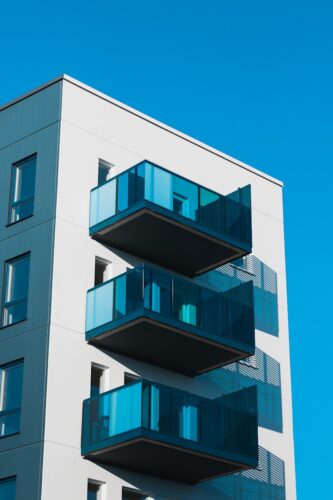HTML and CSS are the two most important technologies for building a website. HTML provides the structure of a website, while CSS provides the styling and presentation of the content. If you’re just starting to learn web development, it’s important to understand the basics of HTML and CSS. Here are 10 essential tips for beginners to help you get started.

- Start with HTML: HTML is the foundation of a website and provides the structure of the content. It’s important to understand the basics of HTML tags, attributes, and elements before diving into CSS.
- Learn CSS Basics: CSS provides the styling and presentation of a website. Start by learning the basics of CSS selectors, properties, and values.
- Use CSS Resets: CSS Resets help to ensure consistency across different browsers and platforms. Start by using a CSS reset like normalize.css to ensure that your styles are consistent across all devices.
- Understand the Box Model: The Box Model is the foundation of CSS layout. It’s important to understand how the box model works in order to create a layout that is consistent across all devices.
- Use CSS Frameworks: CSS frameworks like Bootstrap, Foundation, and Materialize provide a pre-built set of styles that can be used to quickly build a website.
- Learn CSS Selectors: CSS Selectors are used to target specific elements on a website. Understanding CSS Selectors is essential to effectively styling your website.
- Understand CSS Specificity: CSS Specificity determines which styles are applied to an element. Understanding CSS Specificity is important for creating a consistent and organized CSS file.
- Use CSS Preprocessors: CSS preprocessors like Sass and Less provide advanced features like variables, mixins, and functions that can be used to make writing CSS easier.
- Use a CSS Grid System: A CSS Grid System can help you create a responsive layout that is flexible and adapts to different screen sizes. Start by using a pre-built CSS Grid System like Bootstrap or Foundation.
- Practice, Practice, Practice: The best way to learn HTML and CSS is to practice building websites. Start by building small projects and gradually work your way up to more complex projects.
In conclusion, HTML and CSS are essential technologies for building a website. By following these 10 tips, you can start your journey to becoming a web developer. Remember to practice and continue learning, as web development is a constantly evolving field.
HTML and CSS: Understanding the Basics of Web Design
HTML and CSS are the fundamental building blocks of the web. Understanding these technologies is essential for anyone looking to develop a website. In this article, we will cover the basics of HTML and CSS and how they work together to create websites.
HTML (Hypertext Markup Language) is a language used to describe the structure and content of a web page. HTML consists of a series of elements, such as headings, paragraphs, images, and links, which are used to define the structure of a page. HTML elements are surrounded by tags, which are used to tell the browser how to display the content. For example, the <h1> tag is used to define a heading, while the <p> tag is used to define a paragraph.
CSS (Cascading Style Sheets) is a language used to describe the presentation and style of a web page. CSS is used to control the appearance of elements on a web page, such as font size, color, and spacing. CSS is applied to HTML elements using selectors, which are used to target specific elements on a page. For example, you can use the class selector to target a specific class in your HTML, or the ID selector to target a specific ID.
When HTML and CSS are combined, they create a powerful tool for creating beautiful and functional websites. HTML provides the structure of a web page, while CSS provides the styling and presentation. By separating the structure and presentation of a web page, developers can make changes to the design of a website without affecting the underlying content.
To start building a website,
The Importance of Responsive Design with HTML and CSS
In today’s digital world, having a website that looks great and works well on all devices is crucial. With the rise of mobile devices, it’s more important than ever to have a website that’s responsive, meaning it adjusts to fit the screen size of the device it’s being viewed on. This is where the importance of responsive design with HTML and CSS comes into play.
HTML (Hypertext Markup Language) provides the structure of a website, while CSS (Cascading Style Sheets) provides the styling and presentation of the content. By combining HTML and CSS, developers can create a website that looks great on all devices, from desktops to smartphones.
Responsive design involves using HTML and CSS to create a layout that adjusts to fit the screen size of the device it’s being viewed on. This means that the layout of a website will change based on the screen size of the device, ensuring that the website looks great and is easy to use on all devices.
One of the main benefits of responsive design is that it improves the user experience. A responsive website will look great on all devices, making it easy for users to navigate and find the information they need. This is especially important for mobile devices, where users expect a seamless and efficient experience.
Responsive design also helps to improve the search engine optimization (SEO) of a website. Google has stated that responsive design is a ranking factor, meaning that websites with a responsive design will rank higher in search results than those without. This is because responsive design provides a better user experience and makes it easier for Google’s algorithms to crawl and index the content on a website.
Another benefit of responsive design is that it makes it easier to maintain a website. By having a single website that adjusts to fit different screen sizes, developers only need to make changes to one website, rather than creating separate websites for different devices. This can save time and money in the long run.
To create a responsive design with HTML and CSS, developers use a combination of CSS media queries and responsive grid systems. CSS media queries are used to detect the screen size of a device and apply different styles based on the screen size. Responsive grid systems are used to create a flexible layout that adjusts to fit different screen sizes.
In conclusion, responsive design is crucial for creating a website that looks great and works well on all devices. By combining HTML and CSS, developers can create a layout that adjusts to fit the screen size of the device it’s being viewed on, improving the user experience, SEO, and making it easier to maintain a website. If you’re just starting to build a website, make sure to consider the importance of responsive design with HTML and CSS.
HTML and CSS Frameworks: Which One is Right for Your Project?
HTML and CSS frameworks are pre-prepared libraries that make it easier to design and develop websites. They provide a structure for designing and building websites, making it easier and faster to get started. However, with so many frameworks to choose from, it can be difficult to decide which one is right for your project.
Here are some of the most popular HTML and CSS frameworks and what they offer:
- Bootstrap: Bootstrap is a responsive framework that is designed to make it easier to create websites that look great on all devices. It provides a range of pre-designed components, such as buttons, forms, and navigation menus, that can be easily customized to fit your project.
- Foundation: Foundation is a responsive framework that is designed to make it easier to create websites that are optimized for mobile devices. It provides a range of pre-designed components, such as buttons, forms, and navigation menus, that can be easily customized to fit your project.
- Materialize: Materialize is a responsive framework that is designed to make it easier to create websites with a material design look and feel. It provides a range of pre-designed components, such as buttons, forms, and navigation menus, that can be easily customized to fit your project.
- Semantic UI: Semantic UI is a responsive framework that is designed to make it easier to create websites that are optimized for accessibility. It provides a range of pre-designed components, such as buttons, forms, and navigation menus, that can be easily customized to fit your project.
- Bulma: Bulma is a modern CSS framework that is designed to make it easier to create websites that look great on all devices. It provides a range of pre-designed components, such as buttons, forms, and navigation menus, that can be easily customized to fit your project.
When choosing a HTML and CSS framework, it’s important to consider your project’s requirements and choose a framework that meets those needs. For example, if you’re creating a website that needs to be optimized for mobile devices, you may want to consider using Foundation or Materialize. If you’re creating a website that needs to be accessible, you may want to consider using Semantic UI.
In conclusion, HTML and CSS frameworks can make it easier and faster to design and develop websites. By providing a structure for designing and building websites, they can save you time and effort. When choosing a framework, it’s important to consider your project’s requirements and choose a framework that meets those needs.
CSS Grid and Flexbox: A Guide to the Future of Web Design
CSS Grid and Flexbox are two modern CSS technologies that are changing the way websites are designed and developed. They provide a new way to create layouts, making it easier and faster to design and develop websites that look great on all devices.
CSS Grid is a two-dimensional layout system that allows you to create complex layouts with ease. It provides a flexible grid system that can be used to create columns and rows, making it easy to create layouts that are optimized for different screen sizes. CSS Grid is ideal for creating layouts for websites and applications, as it provides a more flexible and powerful layout system than traditional HTML and CSS.
Flexbox, on the other hand, is a one-dimensional layout system that provides a flexible way to create layouts that are optimized for different screen sizes. It allows you to create layouts that adjust to the size of the screen, making it easy to create responsive designs that look great on all devices. Flexbox is ideal for creating layouts for smaller components, such as navigation menus, forms, and buttons.
By combining CSS Grid and Flexbox, you can create a flexible and powerful layout system that can be used to create a wide range of different layouts. This means that you can create complex layouts with ease, making it faster and easier to design and develop websites that look great on all devices.
In conclusion, CSS Grid and Flexbox are the future of web design. They provide a flexible and powerful layout system that makes it easier and faster to design and develop websites that look great on all devices. Whether you’re a beginner or an experienced developer, it’s important to learn how to use CSS Grid and Flexbox in your web projects. With these technologies, you can create a wide range of different layouts, making it easier and faster to design and develop great-looking websites.



